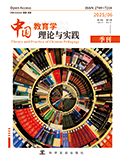

X小学是滇中玉溪的一所有着百年办学历史的县域小学, 其所处的通海县, 因云南四大名山之一的秀山而享有得天独厚的人文历史条件。自二十世纪九十年代起, X小学历任校长就以传承秀山的楹联文化为己任, 在校园文化的建设过程中, 充分融入楹联元素, 为地方传统文化———秀山楹联的继承和发展做出了诸多的努力。本案例以X小学一位于2021年参加“中华诗词大会”云南赛区选拔赛并获得较好成绩的同学为切入点, 从家庭文化、班级文化和校园文化对学生的熏陶为视角, 通过文献查找、对象访谈和个案研究的方式, 探寻该校领导、教师、学生在楹联文化建设方面的所作所为和取得的成效, 以及楹联文化建设对学生个体成长的影响。通过对这一个案的研究, 我们发现: (1) 一所学校的校园文化, 包括班级文化的营造在潜移默化中对学生个体的成长有着极其重要的熏陶作用。 (2) 校园文化不仅仅是写在校风、校训里的文字, 文化的传承与发展应落实在学校的各种活动中, 且要形成常规并长期坚持。 (3) 地方传统文化的保护和传承与学校的育人方式密不可分, 文化育人是一条十分有效的路子。 (4) 家庭文化在学生个体的成长过程中也有着十分重要的作用, 家庭教育对孩子习惯的培养、行为的塑造、价值观的引导方面不可或缺, 校园文化的建设应考虑学生家庭的影响因素。
X primary school is a county primary school with a hundred-year history of operation in Tonghai County, Yuxi, and central Yunnan. Tonghai County, where it is located, has unique humanistic and historical conditions because of Xiushan Mountain, one of the four famous mountains in Yunnan. Since the 1990s, the successive principals of X primary school have taken the inheritance of Xiushans couplet culture as their own responsibility, and in the process of campus culture construction, they have fully integrated the couplet elements and made their efforts for the inheritance and development of the local traditional culture- Xiushan couplets. This case takes a student of the X primary school who participated in in the "Chinese Poetry Conference" Competition Yunnan Region Selection Competition in 2021 and got good results as the starting point, and takes the influence of family culture, class culture and campus culture on students as the perspective. Through the literature search, we explored what school leaders, teachers and students of the school did and achieved in the construction of the Couplet Culture, as well as the influence of couplet culture construction on the growth of individual students. Through this case study, we found that: First of all, the campus culture of a school, including the construction of class culture, has extremely important implications on the development of individual students. Second, school culture is not just the words which written in the school spirit, school motto, the inheritance and development of culture should be implemented in the various activities of the school, and must form. a routine and long-term persistence. Third, the protection and inheritance of local traditional culture is inseparable from the schools way of educating people, and cultural education is a very effective way. Last but not least, family culture also plays a very important role in the growth of individual students. Family education is indispensable for the cultivation of childrens habits, the shaping of their behavior. and the guidance of their values. The construction of campus culture should take into account the influence of students families.